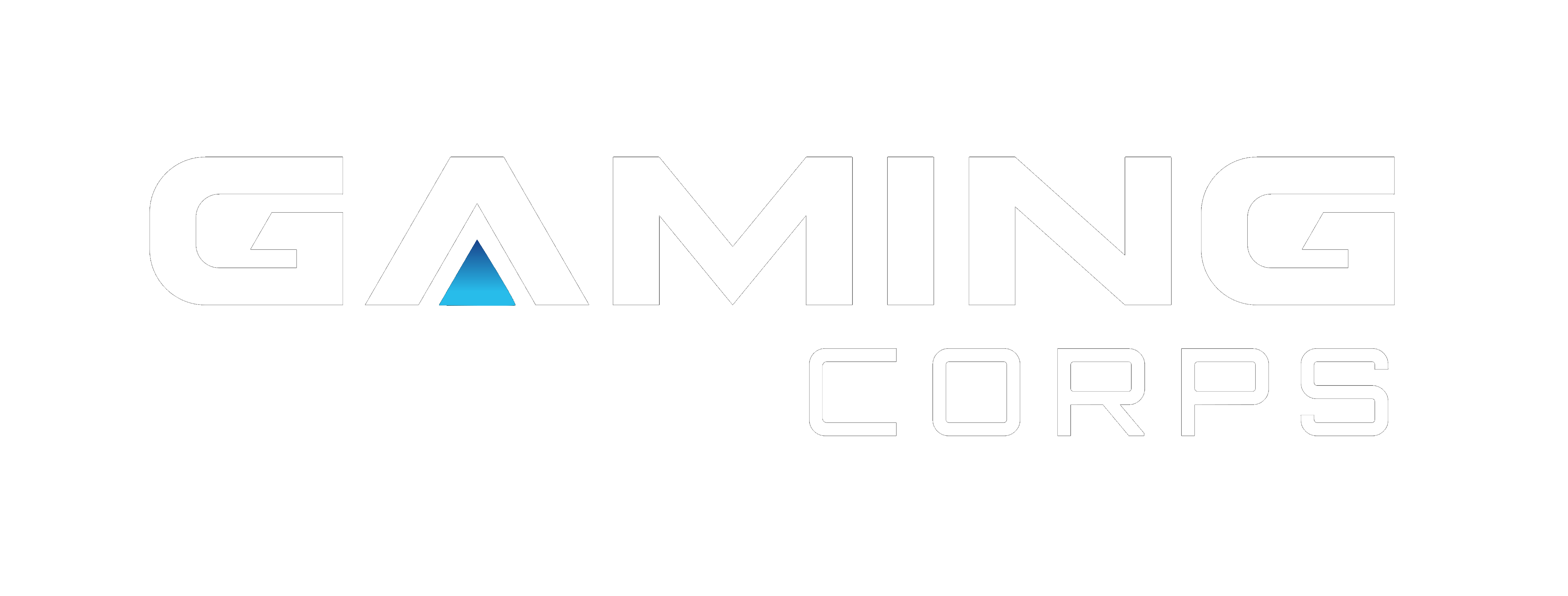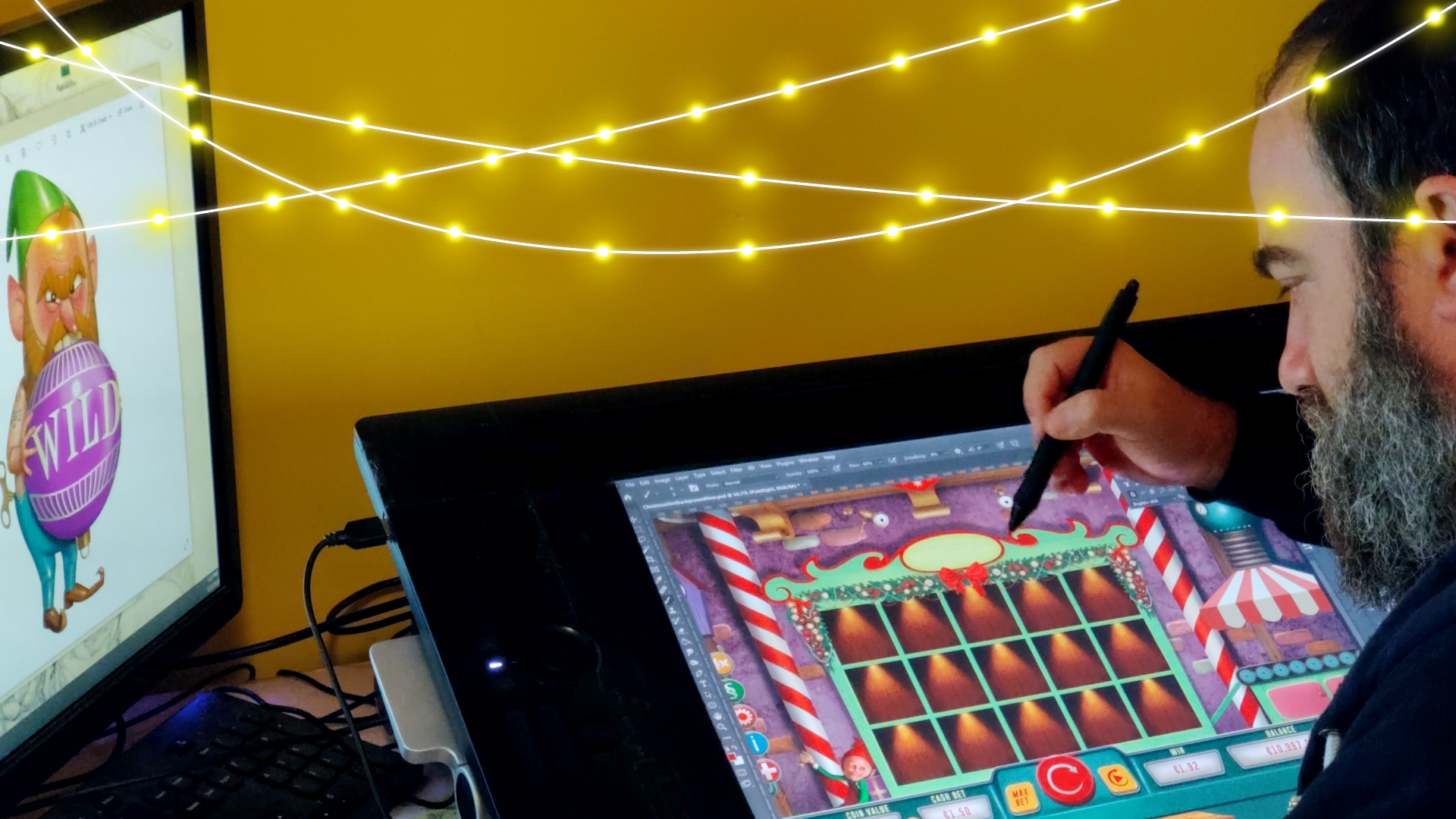Day 4 of our calendar we dive back into the iGaming production process, which will be a series of eight days in total. Today the topic is Art creation.
As described in the first entry on December 1st, the initial step of the production process is the design document which then leads to setting the theme of the game via research, inspiration and initial sketches. Today the chosen image features Gaming Corps Art Director James Sciberras hard at work creating the machine for the upcoming game “Angry Elf”. To James, research is very important. His research spans several different topics, from inspirational searches in the beginning, to more targeted research (ie. best practice review) with the purpose of gaging what is available on the market right now, what is popular, what is up and coming and what is commonly used in regard to the chosen theme. Here the balance is to do something with the theme that will strike a chord with the players, but at the same time present something new and distinct so as to ensure differentiation. Often casino slots have a historic theme, or some historic connection, and even though we move in the realm of imagination and entertainment, for James it is crucial to ensure accuracy within the artistic framework. So historic background is another round of research which may have an impact on the details of the game. For instance, with Undead Vikings, James opted out of using the classical horned helmet for a symbol, as it is widely known to be historically inaccurate.
The art in a casino slot consists of several components, with the main ones being backgrounds, symbols and the machine itself. Here different artists have different approaches, for James his chosen routine is to start with backgrounds, then draw the machine and finally move on to symbols. Once the symbols are done, he goes back to working on the background and machine, this time taking user interface and placement into consideration, aiming to create little details which will ensure differentiation.
But, before getting too far, the artist needs to consult the animator. In James’ case he does this as a reality check when key components are in the sketch stage, before colouring or having made hard decisions. How can the art assets be animated in the best way? Is a component too complicated be worth it? Can something be done differently? Based on this input the concept artist goes back, makes the required changes, and then starts to perfect all the art. The delivery of the art is like an Ikea package – in parts! If for instance a symbol is a lion that roars, the artist needs to deliver the full image as well as all separate parts; body, legs, head, mane, mouth, tail etc. so that the animator can create movement.
As can be seen in the image James is working with two screens. The most important one is the flat one called the “cintiq”. With the aid of a stylus, the artist can draw on the cintiq and create digital designs much like using a pen and paper. To keep in close contact with the rest of the team, and move in between programs without having to break in the middle of creating, James uses a second monitor for all other needs.
The relationship between artist, animator and developer is very close and intensifies as the process moves forward. Next time we revisit the iGaming production process will be on December 7th when the topic is Animation. What does our master animator Juliano Castro do once he gets the IKEA package? Stay tuned to find out!
Tomorrow December 5th the calendar focuses on the Gaming Corps business idea, we hope to see you then.




